WHAT ARE THE ADVANTAGES OF WORKING WITH AN SLM?
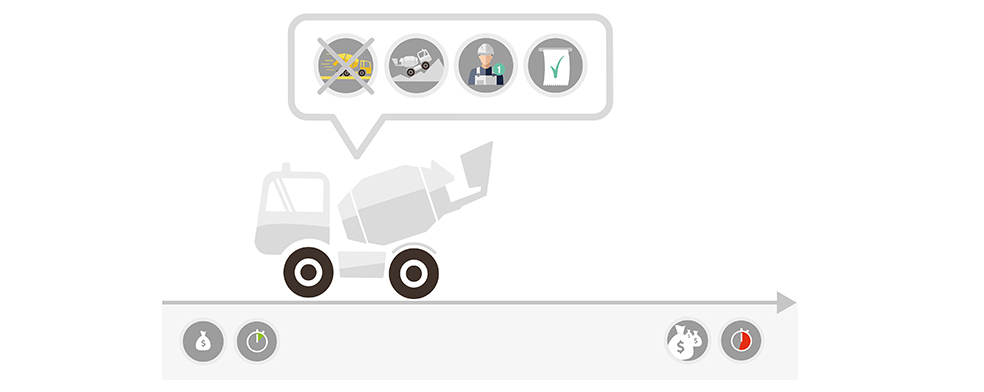
The SLM solution allows to batch quality concrete autonomously and directly on-site, with a single operator taking care of loading, mixing and pouring. Batching concrete “just in time” with an SLM has several advantages: it ensures the best results from the cement hydration process, it simplifies the logistics of the construction site, it minimizes the need for workforce, it allows a high flexibility and it guarantees total control over the quality and quantity of each batch. The maneuverability and excellent off-road mobility allow the SLM to reach the most inaccessible places in complete safety and comfort.
WHAT IS THE DIFFERENCE BETWEEN AN SLM AND A MANUAL DRUM MIXER ?
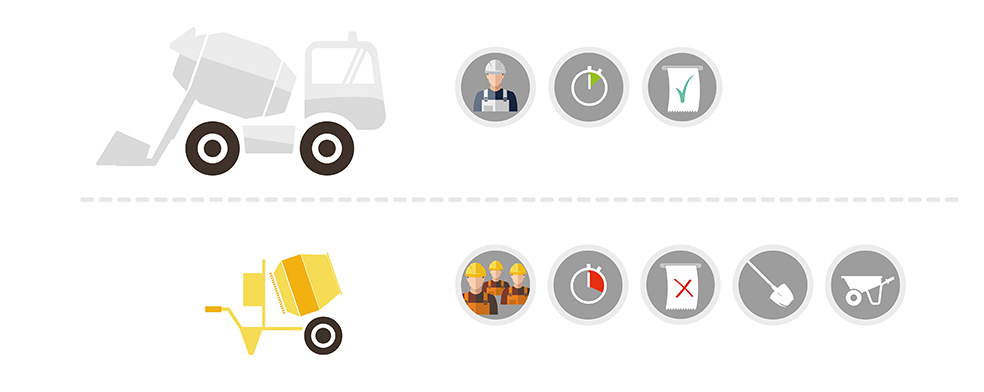
The advantages of the SLM over manual concrete mixers are endless, and very often justify the difference in investment (even in the poorest countries). As well as reduced labour, greater daily productivity, and complete independence from any other loading and transportation devices, SLMs enable components to be dosed and mixed to produce high quality concrete. In emerging and developing countries, the SLM is now considered the first level of mechanisation/monitoring in concrete production.
WHAT WILL BE THE COST OF CONCRETE BATCHED WITH AN SLM ?
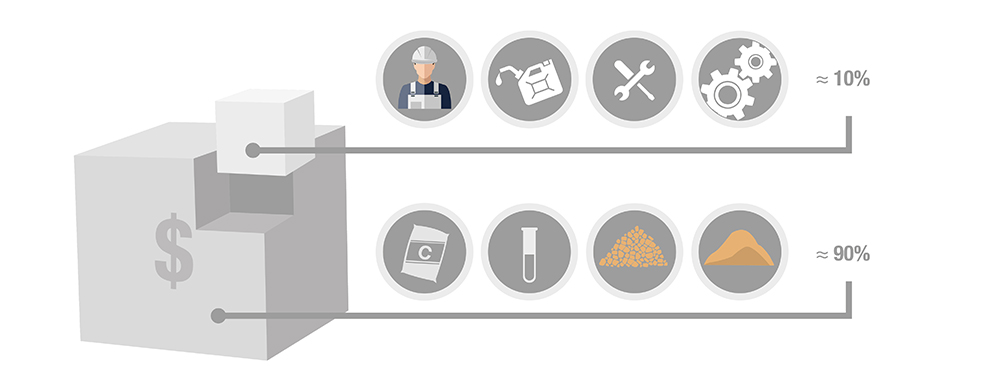
Studies and analysis conducted in various countries and under different working conditions have shown that the total operating cost of an SLM is significantly low: approximately 5-15 % of the total production cost of the concrete, or on average, 1/10 of the cost of the raw materials.
WHAT KIND OF CONCRETE CAN BE BATCHED IN THE CBV ?

Unlike the drums in the concrete mixer, which are designed to STIR the concrete, the SLM drums were designed to MIX. FIORI is known for manufacturing the best drum mixers for cement products in the category, which can mix slurry, shotcrete, dry-mix, concrete with big-size coarse aggregates, chemical admixtures, colourants, metallic or synthetic fibres, etc.
IS IT MORE ACCURATE TO WEIGH MATERIALS IN THE BUCKET OR IN THE DRUM ?

The most accurate system possible, for data regarding the weight of materials introduced into the drum of an SLM, is transducers positioned on arm lifting jacks. The accuracy of weighing systems is in fact a value (%) proportional to the maximum weight to be measured and, therefore, weighing the contents of the shovel instead of the contents of the entire drum, ensures fewer measurement errors. In addition, according to the theory of errors, with the same level of accuracy of the weighing system, individual and repeated weighing gives a higher level of accuracy than a single overall weighing.
WHAT IS THE DIFFERENCE BETWEEN AN SLM AND A MOBILE BATCHING PLANT ?
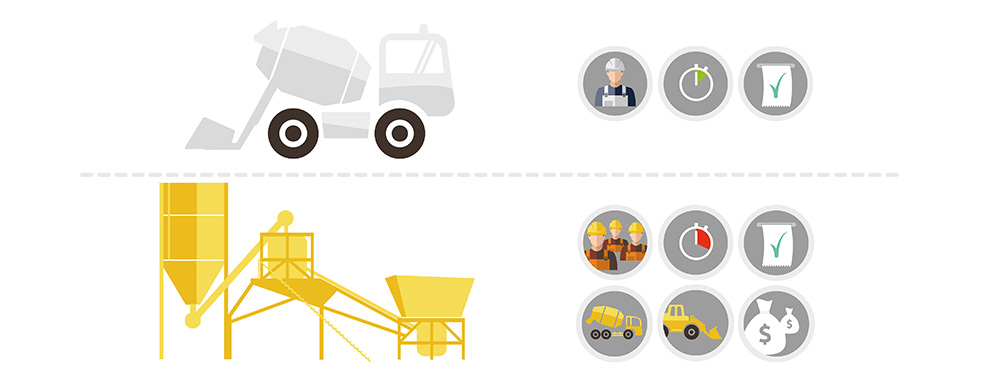
The CBV version of the SLM from FIORI really is an independent concrete batching plant on wheels. Equipped with the most up-to-date technology for monitoring the batch production process, it enables the production of certifiable quality concrete. Mobile Concrete batching Plants, on the other hand, are “portable” solutions which, although relatively quick to install, do require the use of other vehicles such as the loader and concrete mixer.
WHICH IS THE BEST ORDER TO LOAD THE COMPONENTS ?
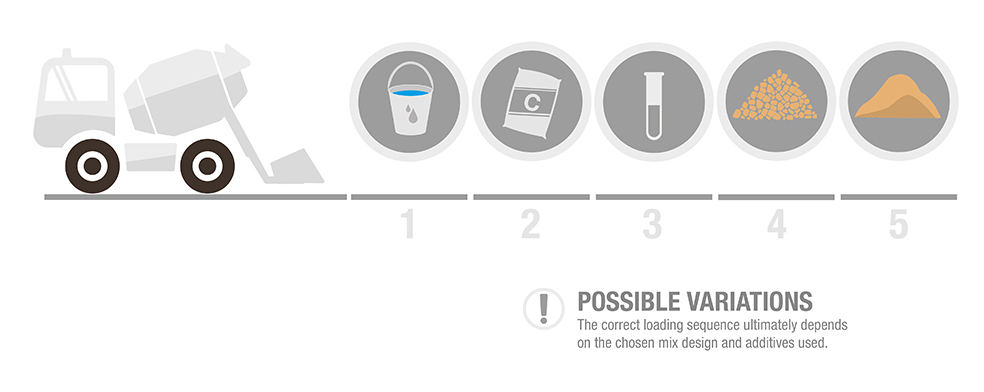
When a batch of concrete is being made with an SLM, the sequence for loading components may vary according to the MIX DESIGN and the type of additive. In general, theoretically, the correct sequence would be: Water (partial), Cement, Additive, Gravel, Sand + finishing Water (adjusted according to any moisture present in the aggregates at the time of loading).
IS AN EXPERT WORKER NECESSARY TO BATCH CERTIFIABLE CONCRETE ?
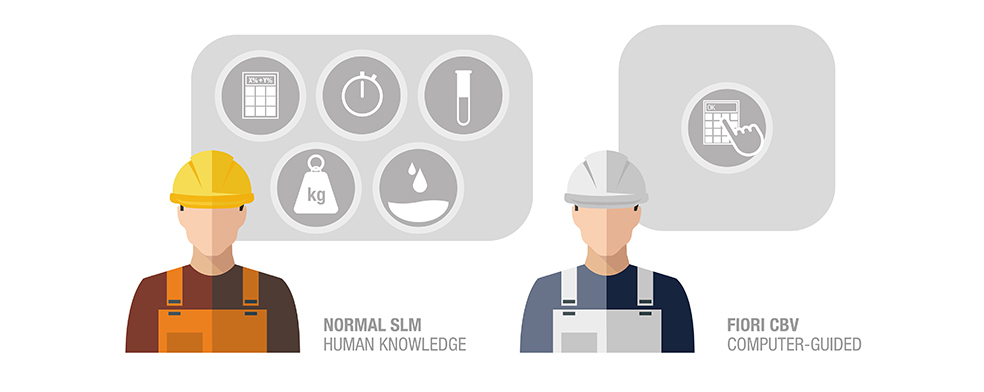
The operator of a FIORI CBV needs no specific skills. Once the various mix-designs you want to produce have been loaded onto the device (typed on the keyboard or via USB), the operator must select the mix design to be prepared, enter the batch quantity and start the cycle. Following the instructions from the on-board computer, any operator can produce certified concrete.
WHAT ARE THE ADVANTAGES OF A CEMENT SILO ?
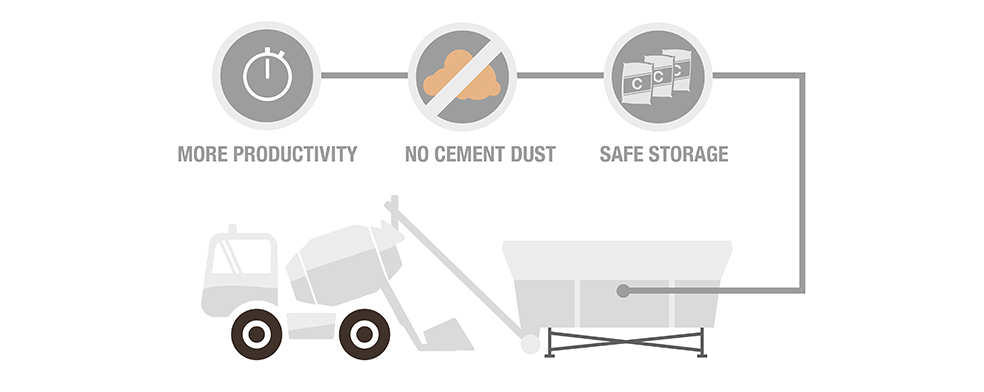
The horizontal silo provided by FIORI perfectly complements their SLM to increase productivity, protect the storage of cement and avoid problems (environment, workers’ health, cleaning, etc. …) related to loading the cement due to broken sacks inside the bucket.
HOW DOES THE WEIGHING SYSTEM WORK ?
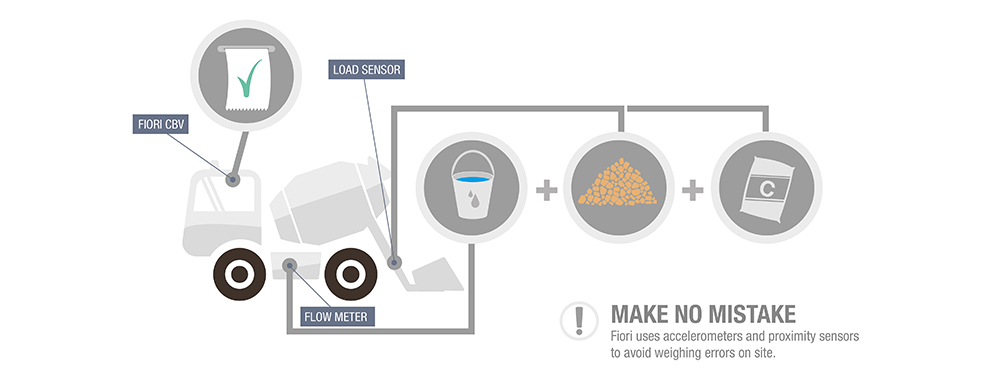
Water is measured by volume using a high precision electromagnetic flow meter. Cement and aggregates are weighed with the shovel using transducers positioned on lifting jacks. An accelerometer and a proximity sensor guarantee correct readings, even on a construction site.
HOW DOES SLUMP AFFECT DRUM CAPACITY ?
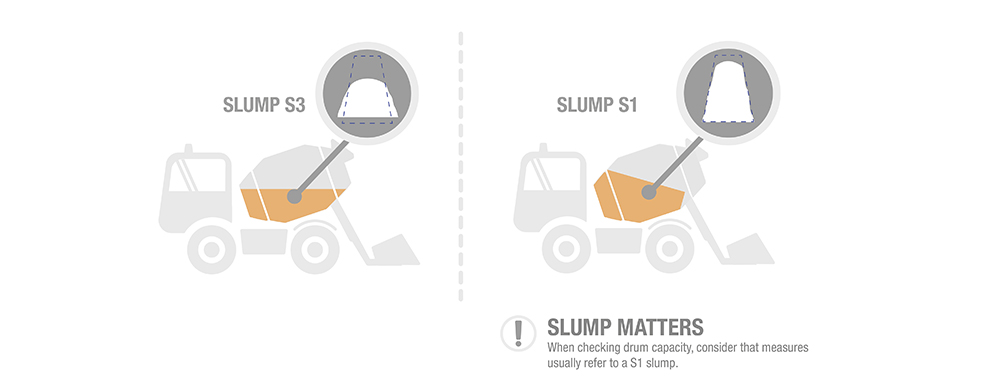
The output from a drum, which depends on the shape of the drum itself and the inclination of its axis, is linked to the viscosity of the concrete, also known as the slump. The nominal output of SLMs is commonly given in reference to S1 slump concrete. An increase in the slump leads to a proportional reduction in the output of each batch.
WHY IS IT SO IMPORTANT TO MEASURE MOISTURE IN AGGREGATES ?

The varying moisture contained on aggregates is one of the major causes of inconsistency in batching concrete from one batch to another. Moisture content can have dramatic effect on the concrete compressive STRENGHT and DURABILITY because it has a great influence on the WATER/CEMENT ratio. Knowing the moisture content on SAND and GRAVEL, it allows the Concrete Batch Controller to accurately calculate and adjust the amount of water to be added to the mix.
WHY IS THE CBV SO DIFFERENT FROM THE WEIGHING SYSTEM ?
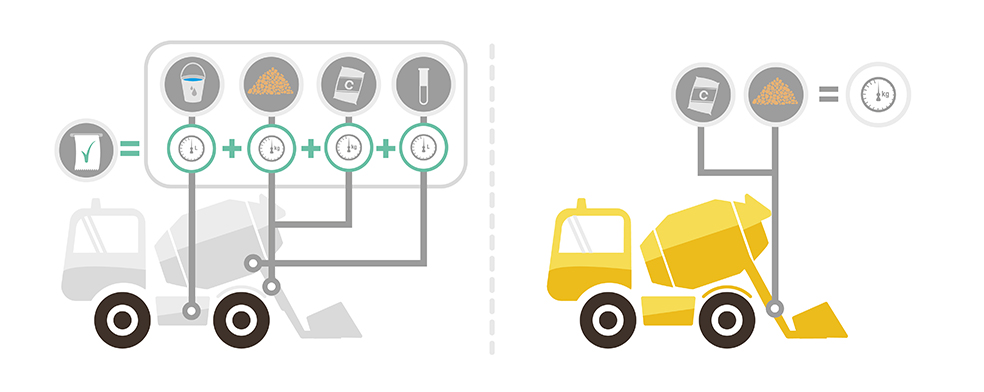
Unlike the Weighing System, the Concrete Batching Vehicle controls the process of dosing and mixing aggregates, cement, water and admixtures. It is equipped with sensors and an advanced electronic control unit that leads the operator to produce consistent and controlled batches of concrete. The traditional Weighing System, nowadays mounted on many SLM’s, is only a ‘scale’ that helps size batches of concrete. Hence, it gives the misleading idea of controlling the quality of the concrete.
WHAT FACTORS INFLUENCE THE PRODUCTIVITY OF SLM ?
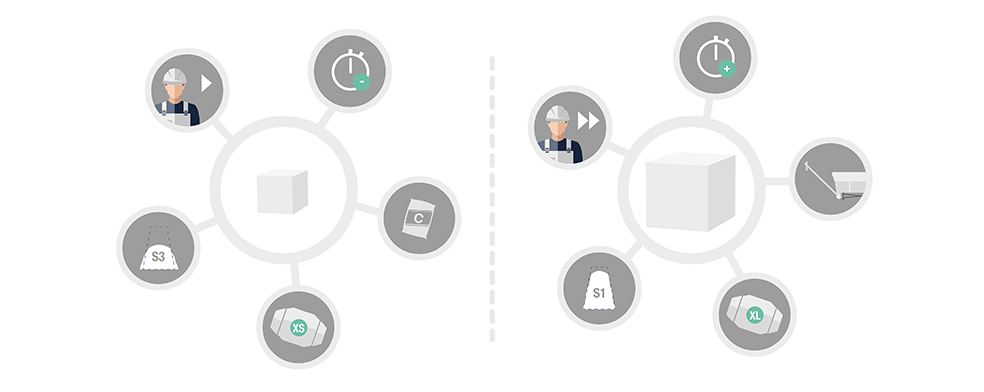
The SLM productivity is influenced by the model size and several other factors: the kind of concrete to be batched and its slump, the distance of the pouring site from where the materials are stocked, the loading method employed, the hours of usage of the machine and the speed at which workers can spread the poured concrete
